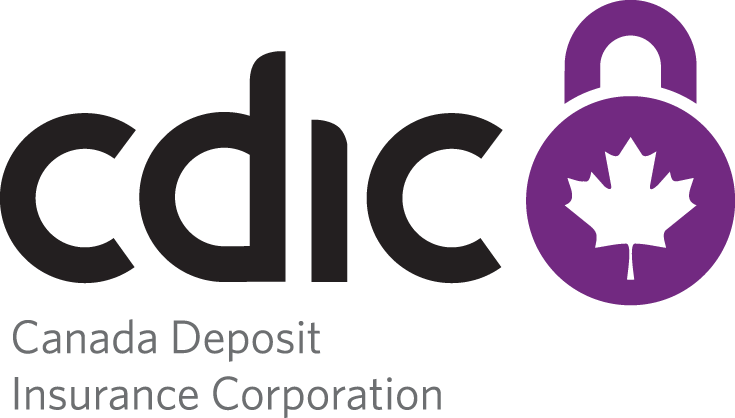Bail-in and D-SIB restructuring powers (E-FIRP)
When it comes to the restructuring of a Domestic Systemically Important Bank (D-SIB), the CDIC Act provides Enhanced Financial Institution Restructuring Powers or E-FIRP. E-FIRP would be recommended by the CDIC Board to the Minister of Finance and would be activated by an order of the Governor in Council (GiC), on the recommendation of the Minister, to:
- vest the shares and subordinated debt of a failing bank in CDIC;
- appoint CDIC as receiver of the member’s assets and undertaking;
- require the Minister to incorporate a bridge bank; or
- some combination of the above.
These actions are meant for the purposes of carrying out a transaction or a series of transactions to restructure a substantial part of the business of the D-SIB and return it to the private sector once it has been stabilized. The order may also include instructions to convert bail-in debt to common equity.
How it works
Where a D-SIB is determined to be non-viable in the opinion of the Superintendent of Financial Institutions, and the GiC so orders it, CDIC can take control of the bank. The aim would be to continue the bank’s retail deposit-taking and lending businesses and preserve its going-concern value. Under the CDIC Act, CDIC has a year—extendable in one-year increments to five years—to restructure a D-SIB in resolution.
All financial safety net agencies— CDIC, the Department of Finance, the Office of the Superintendent of Financial Institutions (OSFI), the Bank of Canada and the Financial Consumer Agency of Canada (FCAC) —would be in close contact as a D-SIB moved towards the point of non-viability. The resolution of a D-SIB would require the input and co-operation of all safety net agencies.
E-FIRP runway
The formal steps leading to an E-FIRP order are:
-
1
The Superintendent of Financial Institutions forms a non-viability opinion and reports to CDIC’s Board.
-
2
CDIC’s Board reviews options and recommends the Enhanced Financial Institution Restructuring Provision (E-FIRP) tool for the failing bank to the Minister of Finance.
-
3
The Minister of Finance recommends a resolution approach to the Governor in Council (GiC) – the federal Cabinet.
-
4
The GiC makes an order authorizing the E-FIRP approach.
A D-SIB is a large and complex entity. To ensure its rapid stabilization and continued customer service, CDIC would seek to retain key personnel of the D-SIB. CDIC would appoint a new Board of Directors which, in turn, would appoint new individuals to key senior management positions, which could include a new Chief Executive Officer and Chief Financial Officer of the D-SIB.
Possible E-FIRP outcomes
As an outcome of the E-FIRP process, it is possible that a new bank is created in the form of a Bridge Bank, which continues at a minimum the retail banking business of the D-SIB, while other elements of the D-SIB are liquidated or sold, and the legacy bank is wound down.
Another possible outcome is that, while under CDIC control, the D-SIB returns to viability through selling certain non-core assets and re-capitalizing through conversion of certain debt to equity, issuance of new equity, or new borrowing.
The strategy will depend on the cause and source of the D-SIB’s failure, as well as prevailing market and economic conditions at the time.
Bail-in
In 2016, Parliament introduced an amendment to the Canada Deposit Insurance Corporation (CDIC) Act to add the “bail-in power” to the Corporation’s resolution tools. This tool is only for domestic systemically important banks (D-SIBs).
NVCC and bail-in
If a D-SIB is determined to be non-viable by the Office of the Superintendent of Financial Institutions (OSFI), this triggers the conversion of its Non-Viability Contingent Capital (NVCC) (certain bonds which the bank has issued) into common equity. In addition, once in resolution CDIC can request an order from the Governor in Council to convert certain classes of preferred shares and unsecured debt into equity in a process called “bail-in”. Both NVCC conversion and bail-in have the effect of improving the bank’s balance sheet. For depositors and taxpayers, this means that certain creditors of the bank are expected to absorb the bank’s losses.
The bail-in power would allow CDIC to take temporary control through its Financial Institution Restructuring Powers or E-FIRP and convert some of a failing D-SIB’s debt into common shares to recapitalize the bank and help restore it to viability. The bail-in regime builds on CDIC’s existing toolkit and provides another tool for CDIC to keep a failing D-SIB open and operating so it could continue to serve its customers.
Bank customers’ deposits are not bailed-in and this resolution tool doesn’t reduce the deposit protection offered by CDIC.
This means that customers’ chequing accounts, savings accounts and term deposits such as GICs would not be affected if the bail-in power is used with a failing D-SIB. Losses that arise due to the bank’s failure would be covered by the bank’s shareholders and certain investors, not by taxpayers or depositors.
After the completion of the bail-in conversion and any restructuring necessary to stabilize and return the failing D-SIB to viability, CDIC would return the bank to private control.
For more information, consult our backgrounder on Bail-in.
Regulations for the bail-in regime can be found here:
- Bank Recapitalization (Bail-in) Issuance Regulations
- Compensation Regulations
- Bank Recapitalization (Bail-in) Conversion Regulations
- Guidelines to ensure that D-SIBs have sufficient loss absorbing capacity to support their recapitalization in the unlikely event of a failure.
